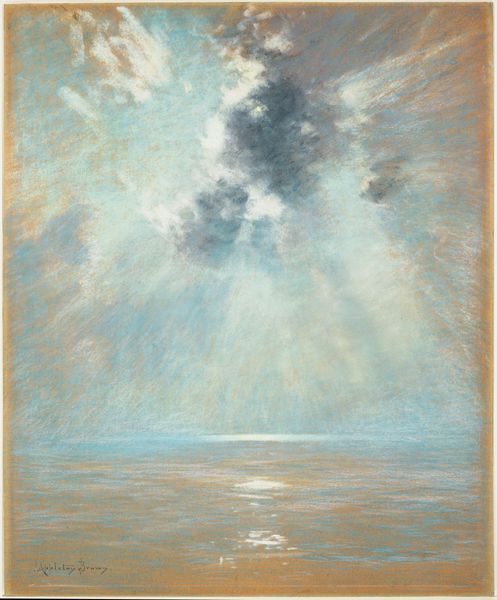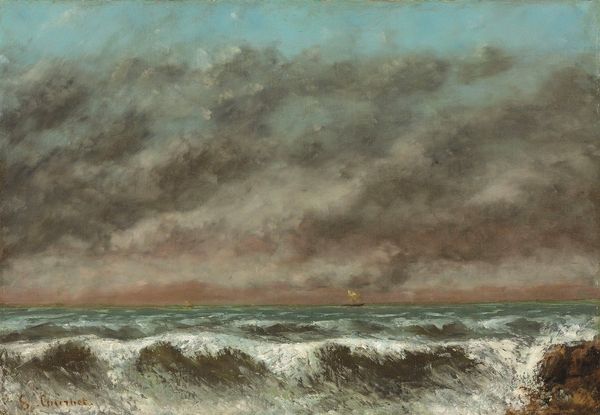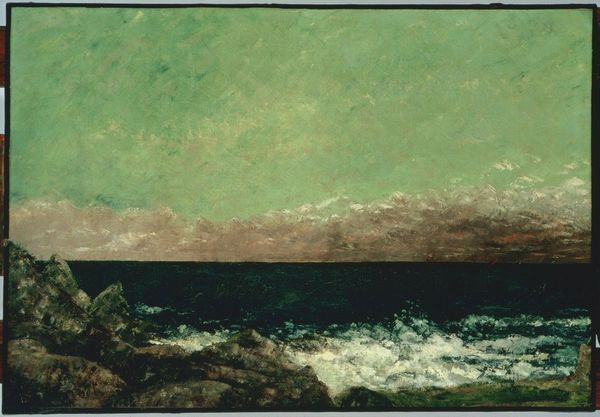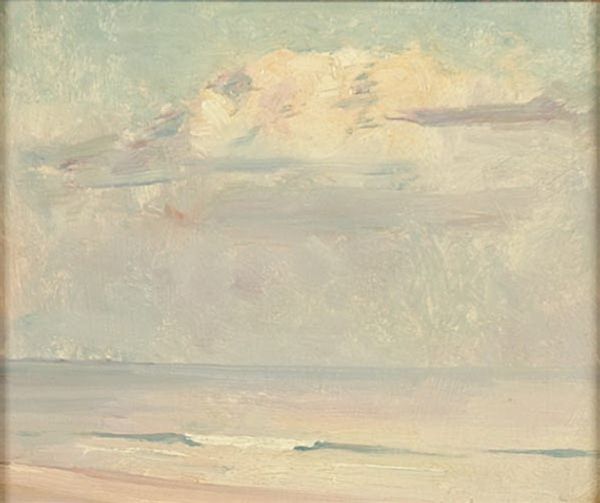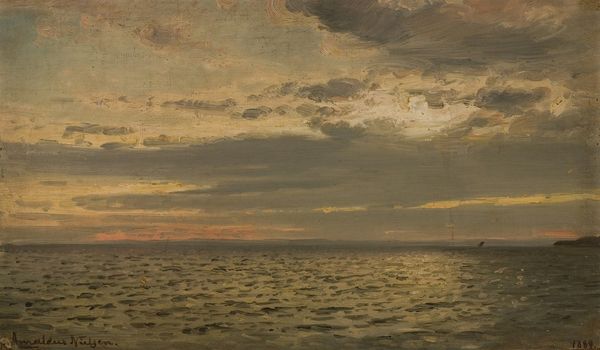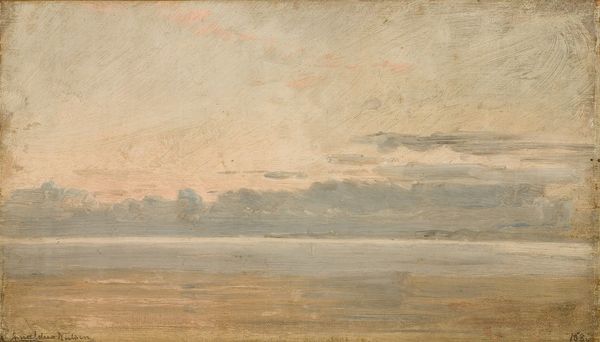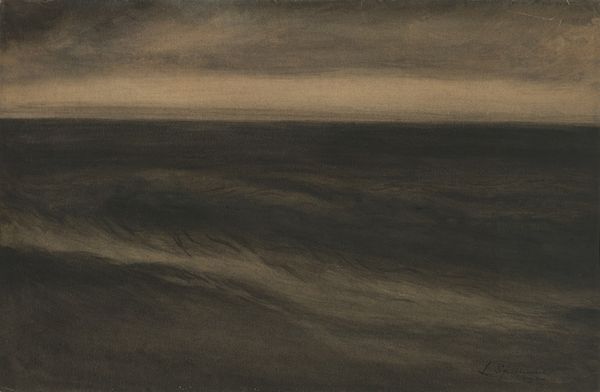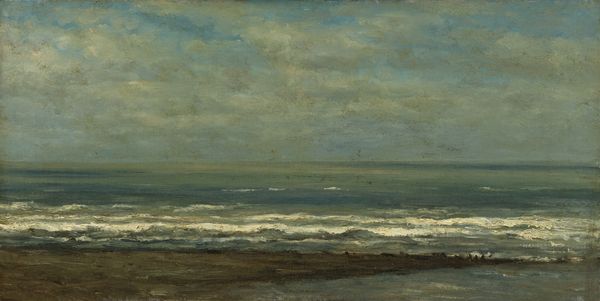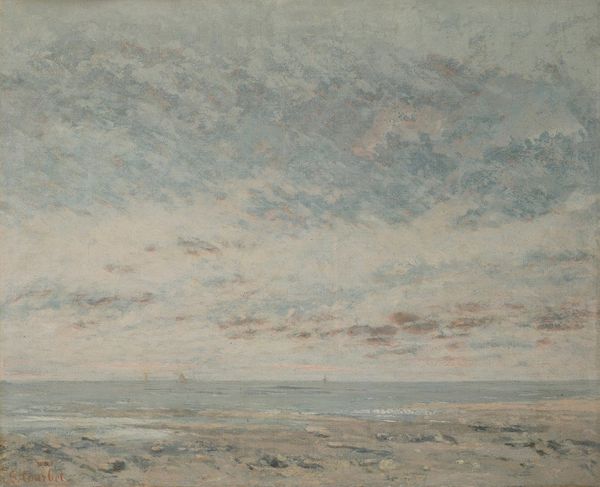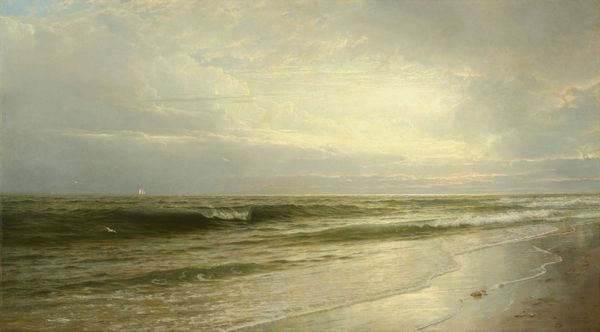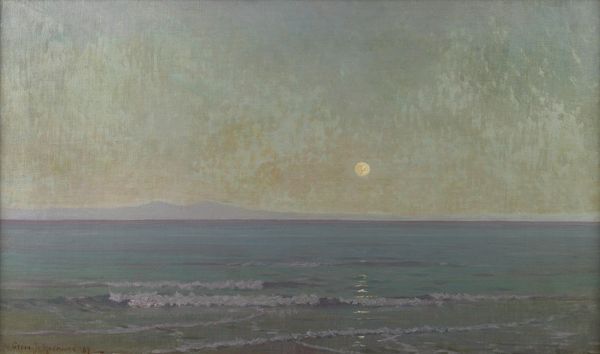
Copyright: Public Domain: Artvee
Curator: This is Leon Wyczółkowski's "Sea at Połąga IV," created in 1908. He captured it en plein air, using watercolor. Editor: My first impression is of tranquility. The soft pastel hues and the blurred lines create a very dreamlike, almost melancholic scene. Curator: Absolutely. The very act of choosing watercolor for an open-air subject connects it with immediacy and a certain portability. Think about what it meant to capture such a vast scene using relatively modest, almost intimate, means. Editor: I see how the sun, rendered almost as a diffused halo, pulls your eye upward. It is quite striking how that single element, positioned toward the very top, informs a feeling of boundlessness, while, simultaneously, it suggests a certain divine presence. It feels intensely personal. Curator: I agree, and beyond the symbolism, look at how the artist employs visible brushstrokes, almost a textural layering of colors. This isn't merely representation; it’s about showing the physical act of creation. How interesting it is to render something as fluid as the sea, with marks that are so clearly the product of labor and intention. It acknowledges the construction of the artwork as a commodity and a product of the artist’s engagement with his means of production. Editor: True. And beyond that element, consider the location: the Baltic Sea held particular resonance, culturally. Water often represents subconscious feelings, a gateway to reflection. Curator: Thinking about the choice of medium again, perhaps Wyczółkowski leaned into watercolor as a cheaper and readily available choice, reflective of his more immediate financial status? We know this artistic engagement, which might initially seem a pure reflection of subjective experience, might simultaneously have been defined by mundane economical forces. Editor: Fascinating perspective! It makes me reconsider my first impression. Instead of pure serenity, now I see the intersection of personal expression and economic constraint playing out in the symbols before us. Curator: Indeed. Material circumstances shape art as much as intention does. Thanks for allowing me to analyze and better understand it. Editor: Likewise. That intersection creates new appreciation. It feels more than pretty to me, with your insight into materials in mind.
Comments
No comments
Be the first to comment and join the conversation on the ultimate creative platform.
